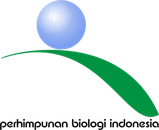DNA Barcoding Based on matK Gene and Phytochemistry Analyses of Local Balinese Kayu Tangi ( Lagerstroemia sp.)
DOI:
https://doi.org/10.15294/biosaintifika.v16i3.9265Keywords:
Antimicrobial, Antioxidant, Medicine Plant, Usada Taru Pramana. , Kayu TangiAbstract
Kayu tangi (Lagerstroemia sp.) is one of the medicinal plants that is often used traditionally by Balinese people for treating insomnia, diabetes, and dysentery. This study aims to determine the phylogenetic trees and the active compounds in Lagerstroemia tomentosa extract and its antioxidant activities. The methods used in molecular identification are DNA isolation, PCR, and DNA sequencing. The DNA sample was BLASTed to see its homology with the sequences in GenBank. These sequences were then used for phylogenetic tree analysis. The phytochemical analysis was done using the GC-MS method and the antioxidant activity test used the DPPH (1,1-diphenyl-2-picrylhydrazyl) after being reacted with the tested extract. The results of molecular identification showed that the samples used were closely related to Lagerstroemia tomentosa species (MW044208.1). The antioxidant activity test results showed an IC50 of 2.1 ugml-1 which is included in the very strong category. The phytochemical test results showed that the most dominant compounds contained in the plant stem bark were furfural (AUC 8.54%), beta-sitosterol (AUC 6.00%), and gamma-sitosterol (AUC 3.81%). Based on PubChem data, these compounds have antioxidant and antimicrobial properties as well as insecticide and herbicide. In conclusion, kayu tangi is very close to Lagerstroemia tomentosa and it’s potentially used as a medicine with strong antioxidant activities.


